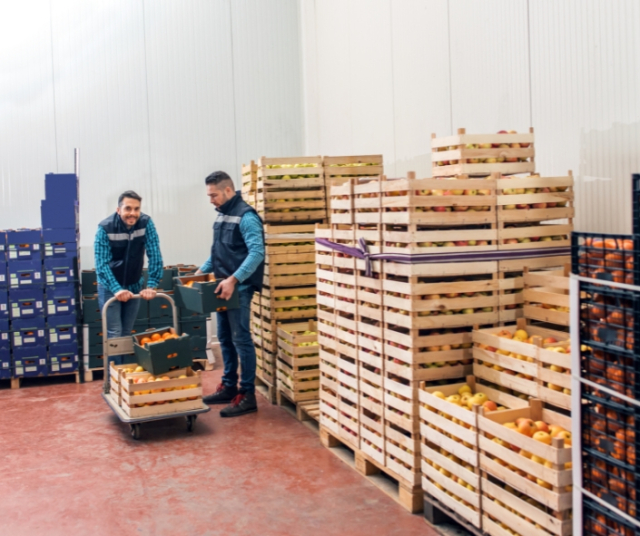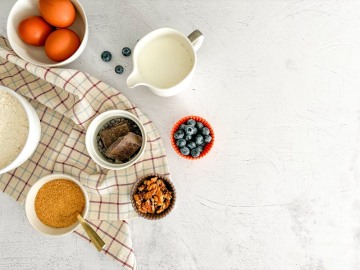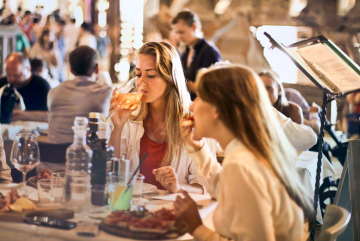The production of agricultural products is a crucial process that sustains our food security and feeds the world's population. From farm fields to our tables, agricultural products go through a series of interconnected processes involving planning, planting, crop care, harvesting, processing and distribution. In this article, we will explore each of these processes in depth, examining their importance and how they contribute to humanity's food supply.
Planning and preparation of the land.
The agricultural production process begins with planning and preparing the land for growing crops. This stage is crucial for establishing the foundation for healthy plant growth.
Site selection.
Choosing the right site is essential for the success of agricultural production. Farmers consider factors such as climate, soil, topography and water availability when selecting a location for their crops. They carry out detailed soil and climate studies to choose the most appropriate location.
Soil preparation.
Before planting, the soil is prepared by activities such as plowing, leveling and applying amendments to improve its structure and fertility. This preparation may include analyzing soil samples to determine necessary nutrients and adjusting them as necessary.
Crop planning.
Farmers plan which crops to grow based on factors such as market demand, seasonality, and soil characteristics. Crop rotation is also considered to maintain soil health and prevent erosion. Geographic information systems (GIS) and other technological tools help in this phase, allowing for more precise planning.
Planting and care of crops.

Once the land is prepared, the process of planting and caring for crops begins, where constant attention is required to ensure healthy growth.
Sowing seeds.
The seeds are carefully sown into the soil, following the recommendations for depth and distance between rows for each type of crop. Farmers can use conventional seeds or genetically improved varieties, depending on their needs and preferences.
Irrigation and fertilization.
Crops need water and nutrients to grow. Farmers apply irrigation and fertilizer systems to meet these needs and promote vigorous growth. Modern technology, such as drip irrigation systems and precision agriculture, helps optimize water and nutrient use, thereby reducing waste and maximizing yield.
Management of weeds, pests and diseases.
Weeds, pests and diseases can affect crop yields. Farmers implement integrated management strategies to control these threats effectively and minimize damage. This may include the use of agronomic practices, such as planting cover crops, as well as the use of selective and biological pesticides.
Harvest and post-harvest.
Once the crops have reached maturity, it is time to harvest. This process marks the end of the plants' growth cycle and the beginning of preparation for distribution and consumption.
Harvest.
Farmers harvest crops at optimal maturity, using specialized tools and machinery to ensure efficient harvesting and minimal product loss. Harvesting can be manual or mechanized, depending on the type of crop and soil conditions.
Postharvest processing.
After harvest, some agricultural products require additional processing for preservation and marketing. This may include activities such as washing, packaging, cooling or drying. Farmers and processing companies work together to ensure that products maintain their quality and freshness during storage and distribution.
Distribution and marketing.

Once processed, agricultural products are distributed through a network of marketing channels that connect farmers with end consumers.
Transport.
Agricultural products are transported from production areas to markets and sales points using a variety of means of transportation, such as trucks, trains, ships or airplanes. Transportation logistics is essential to ensure that products reach their final destination safely and in a timely manner.
Marketing and sales.
Agricultural products are marketed and sold in wholesale markets, supermarkets, local food stores and other outlets. Effective marketing is crucial to attracting consumers and ensuring a constant flow of products to the market. Marketing strategies include advertising, in-store promotions, and participation in agricultural fairs and events.
Consumption and use.
Finally, agricultural products reach end consumers, where they are used in a variety of culinary and non-culinary applications.
Preparation and consumption.
Agricultural products are used to prepare a wide range of foods, from simple dishes to elaborate culinary recipes. Consumers enjoy the freshness and flavor of agricultural products in their daily meals. Home cooking and professional gastronomy use a wide variety of agricultural products, from fresh vegetables to grains and meats.
Industrial and commercial use.
In addition to direct consumption, agricultural products are used in the manufacture of a variety of industrial and commercial products, including processed foods, beverages, chemicals, textiles, and pharmaceuticals. Agricultural ingredients form the basis of many industries, from food to cosmetics and pharmaceuticals.
The production processes of agricultural products are a complex combination of activities involving producers, agricultural workers, scientists, traders and consumers. From planning and planting to distribution and consumption, each step in this journey plays a crucial role in food security and human well-being. By understanding and appreciating the challenges and complexities of agricultural production, we can cultivate a greater awareness of the importance of agriculture in our daily lives and in the sustainability of our planet. Continuous improvement of agricultural processes, adoption of sustainable practices and promotion of greater equity in the supply chain are fundamental to ensuring a safe and healthy food future for generations to come.






